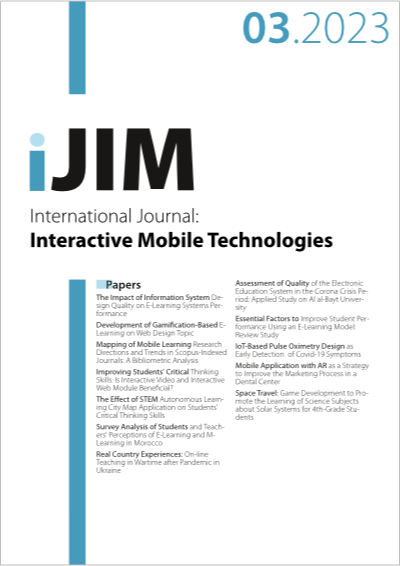Improving Students' Critical Thinking Skills: Is Interactive Video and Interactive Web Module Beneficial?
DOI:
https://doi.org/10.3991/ijim.v17i03.34699Keywords:
phenomenon-based Learning, interactive video, interactive web module, critical thinking skillsAbstract
This study aims to analyze the comparison of students' critical thinking skills by using learning media based on phenomenon-based learning in a general chemistry course. The media were an interactive web module and an interactive video about the colloidal system. This research is comparative research with a quantitative approach. The sample comprised 68 students from the State Islamic University of Sultan Syarif Kasim Riau and The University of Riau from the chemistry education department. The research data were obtained from students' critical thinking ability test, which consisted of 10 questions and was analyzed using SPSS version 26 for windows. The data collected were analyzed using mean and standard deviation to notice the difference in students' achievement, while analysis of covariance (ANCOVA) was used to test hypotheses and the effect size contribution. The results showed there is a significant difference in students' critical thinking skills between classes that use interactive web modules and classes that use interactive video. Both PhenoBL learning media can improve students' critical thinking skills where the effect size reaches one-third of the percentage. Therefore, educators can consider these learning media to facilitate students in improving critical thinking skills.
Downloads
Published
How to Cite
Issue
Section
License
Copyright (c) 2023 Asyti Febliza, Dr. Zul Afdal, M.Pd, Prof. Dr. Jimmi Copriady, M.Si

This work is licensed under a Creative Commons Attribution 4.0 International License.



